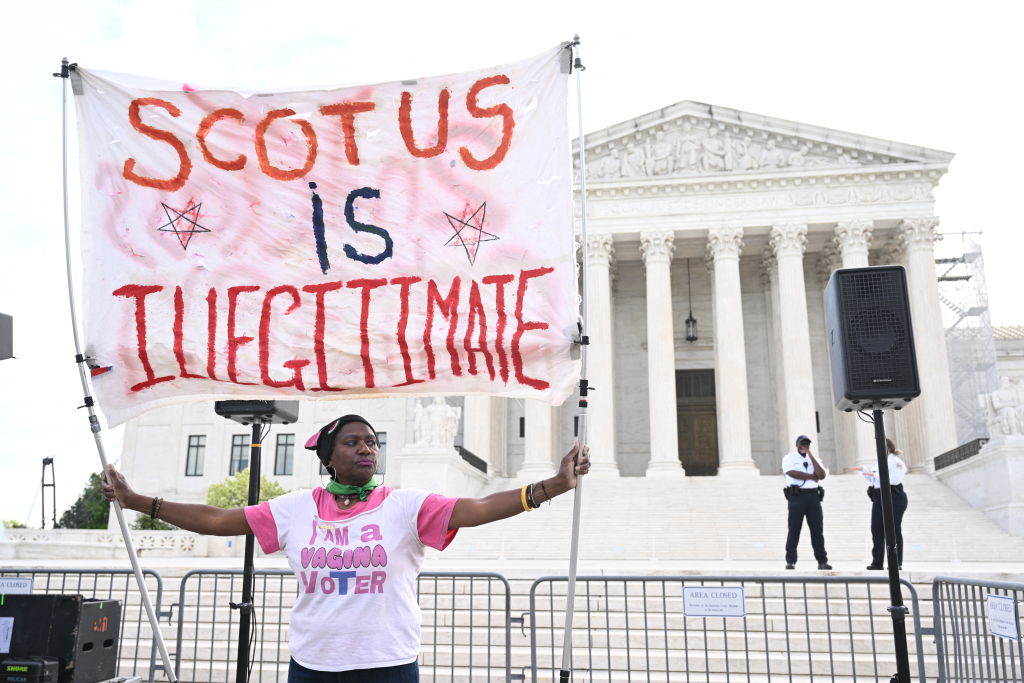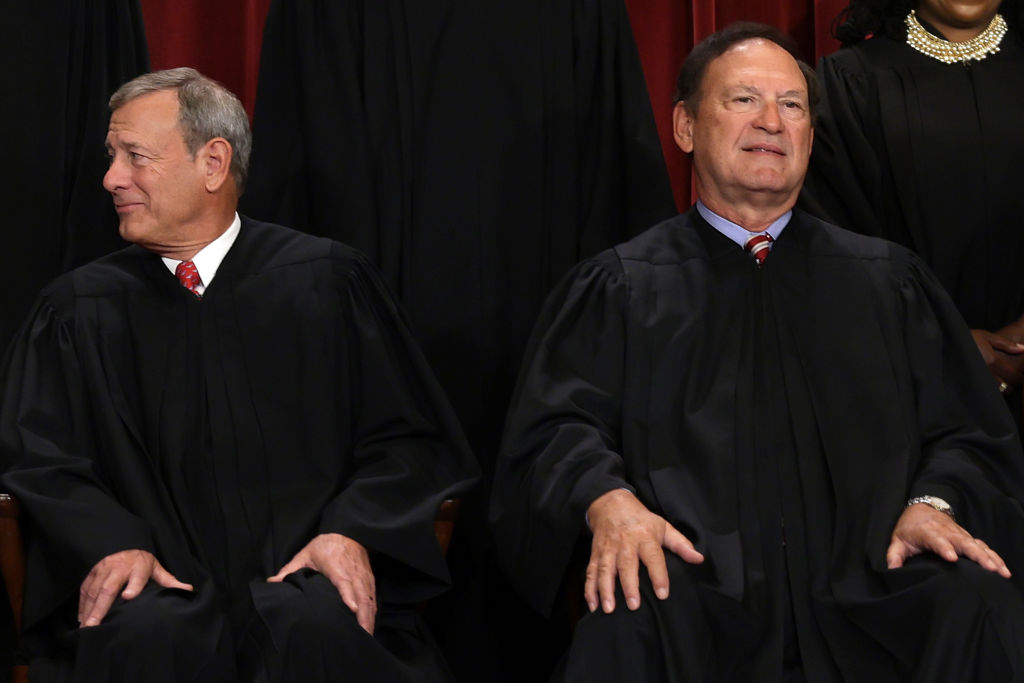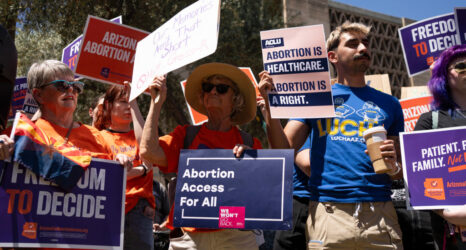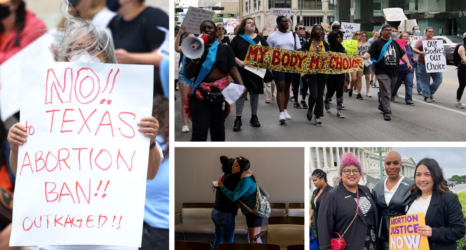Under bans with no health exception for the pregnant woman, doctors are forced to decide: “Is she sick enough? Is she bleeding enough? Is she septic enough for me to do this abortion and not risk going to jail and losing my license?”

It is challenging to write about the case of Idaho and Moyle v. U.S., which was argued before the Supreme Court on Wednesday. The challenge is not because I am having trouble understanding the parties’ legal arguments. Rather, the difficulty lies in trying to grasp the abject cruelty of the position Idaho has staked out. In a nutshell, the state maintains it is not obligated under the Emergency Medical Treatment and Labor Act (EMTALA) to provide abortions needed to stabilize an “emergency medical condition” because its Defense of Life Act only permits pregnancy terminations when “necessary to prevent the death of a pregnant woman.”
EMTALA is a 1986 federal statute that was enacted to prevent hospitals which receive Medicare funding from refusing emergency care to low-income patients—a practice commonly referred to as “patient dumping.” EMTALA’s patient-protective mandate is simple and clear.
- It requires hospitals to screen patients seeking emergency care and to provide stabilizing medical care to prevent “material deterioration” of the presenting condition through transfer to another facility or discharge.
- As a federal statute, it preempts (takes precedence over) state laws that conflict with this mandate.
Prior to the Court’s decision in Dobbs v. Jackson Women’s Health overturning Roe v. Wade, state abortion laws were constitutionally required to contain both a health and life exception. Accordingly, they were effectively in sync with EMTALA’s health stabilization requirement.
However, in the wake of Dobbs, while most abortion-restrictive states have preserved the health exception, a handful of ban states, including Idaho, no longer permit abortions needed to protect a pregnant person’s health. The U.S. government charges this lack of exception in the law is in direct conflict with EMTALA’s health stabilization mandate—since for “some pregnant women suffering tragic emergency complications, the only care that can prevent grave harm to their health is termination of the pregnancy.”
Incorrectly, Idaho Solicitor General Joshua Turner claimed during oral arguments that “nothing in EMTALA requires doctors to … offer medical treatments that violate state law” by insisting they provide abortions needed to preserve pregnant person’s health.
When pressed by Justice Sonia Sotomayor, Turner admitted there was “daylight” between EMTALA and the Defense of Life Act; however, he nonetheless claimed there was no conflict between them, because as long as a physician performed an abortion based on a “good faith” belief it was necessary to save a patient’s life, they were protected from prosecution.
It strains credibility to think we have gotten to the point where the Supreme Court’s conservative supermajority might greenlight Idaho’s blatant disregard for EMTALA’s health stabilization mandate.
In turn, Solicitor General Elizabeth Prelogar eloquently encapsulated what Justice Sotomayor referred to as the “big daylight” between the two laws:
“In Idaho, doctors have to shut their eyes to everything except death—whereas, under EMTALA, you’re supposed to be thinking about things like: Is she about to lose her fertility? Is her uterus going to become incredibly scarred because of the bleeding? Is she about to undergo the possibility of kidney failure?”
This on-the-ground reality was highlighted by the amicus brief submitted by Idaho-based St. Luke’s Medical Center, which provides a firsthand accounting of the Hobson’s choice faced by emergency departments when treating pregnant patients presenting with a medical emergency.
In short, emergency room physicians are faced with the choice to “terminate a pregnancy where necessary to prevent serious jeopardy to a patient’s health, but they may risk criminal prosecution and revocation of their licenses,” or instead wait until the “risks to the patients’ health become life-threatening.”
Dr. Jim Souza, chief physician at St. Luke’s, captured the quandary of trying to determine when intervention no longer carries the risk of up to five years in prison:
“Is she sick enough? Is she bleeding enough? Is she septic enough for me to do this abortion and not risk going to jail and losing my license? When the guessing game gets too uncomfortable, we transfer the patients out at a very high cost to another state where the doctors are allowed to practice medicine.”
These costs include “delaying care while transport is arranged, and distancing patients from their support networks, including the medical providers they know and trust.”
According to Souza, in the three months since the initial injunction on the application of Idaho’s criminal abortion ban to emergency cases was lifted, six patients were airlifted out of state, compared to only one patient in 2023.
Underscoring the grim reality on the ground, some Idaho physicians are now advising pregnant patients or those trying to become pregnant that it might be advisable to “purchase memberships with companies like Life Flight Network or Air St. Luke’s … to avoid potentially significant costs if they need air transport in an emergency.”

We have been repeatedly hit by the harsh post-Dobbs reality that, at every turn, anti-abortion activists are ready to disregard the lives and well-being of pregnant persons in favor of the unborn. Nonetheless, it strains credibility to think we have gotten to the point where the Supreme Court’s conservative supermajority might greenlight Idaho’s blatant disregard for EMTALA’s health stabilization mandate.
And while it certainly is possible that the conservative justices on the Court are truly invested in resolving the preemption question, there is no doubt but that something else is at stake here—namely, fetal personhood.
Surfacing this concern, Justice Samuel Alito, when questioning Prelogar, offered almost as an aside, “We’ve now heard … an hour and a half of argument on this case, and one very important phrase in EMTALA has hardly been mentioned. Maybe it hasn’t been mentioned at all. That is EMTALA’s reference to the woman’s ‘unborn child.’”
He immediately followed up with a pointed question, asking Prelogar, “Isn’t that an odd phrase to put in a statute that authorizes abortion? Have you ever seen an abortion statute that uses the phrase ‘unborn child’? … Doesn’t that tell us something?”
In fact, the phrase had come up several times during Justice Neil Gorsuch’s questioning of Turner, with regard to the intent behind the 1989 amendment to EMTALA requiring stabilizing healthcare to an unborn child in distress. Both concurred that the “something” was that EMTALA regards the fetus as a co-equal second patient.
As Turner opined, “It would be a strange thing for Congress to have regard for the unborn child and yet also be mandating termination of unborn children.”
Prelogar quickly disposed of the view that EMTALA regards the fetus as a rights-holding person. As she explained when grilled by Alito, Congress amended EMTALA in 1989 to ensure that when a pregnant person seeks emergency care because the fetus is in peril, they will not be turned away, as was often the case, because their life or health was not risk.
However, Alito did not buy this. In line with Gorsuch—suggesting where the conservative majority may land—he asked, “Doesn’t what I read to you [namely, EMTALA’s unborn child provisions] show that the statute imposes on a hospital a duty to the woman certainly, and also a duty to the child?”
Somewhat obliquely returning to the preemption question, he indicated that EMTALA “doesn’t tell the hospital how it is to adjudicate conflicts between these interests and it leaves that to the states.”
Of course, leaving it to the states in this way would give Idaho and other states without a health exception free rein to prioritize the rights of the fetus over those of a pregnant patient who is facing, for example, the potential loss of fertility, or permanent organ damage or the onset of seizures, or hypoxic brain injury.
If Idaho and other abortion ban states are allowed to continue to play with women’s lives, unchecked by the Court, expect (as Prelogar warned) “tragedy upon tragedy.”
Up next:
U.S. democracy is at a dangerous inflection point—from the demise of abortion rights, to a lack of pay equity and parental leave, to skyrocketing maternal mortality, and attacks on trans health. Left unchecked, these crises will lead to wider gaps in political participation and representation. For 50 years, Ms. has been forging feminist journalism—reporting, rebelling and truth-telling from the front-lines, championing the Equal Rights Amendment, and centering the stories of those most impacted. With all that’s at stake for equality, we are redoubling our commitment for the next 50 years. In turn, we need your help, Support Ms. today with a donation—any amount that is meaningful to you. For as little as $5 each month, you’ll receive the print magazine along with our e-newsletters, action alerts, and invitations to Ms. Studios events and podcasts. We are grateful for your loyalty and ferocity.





